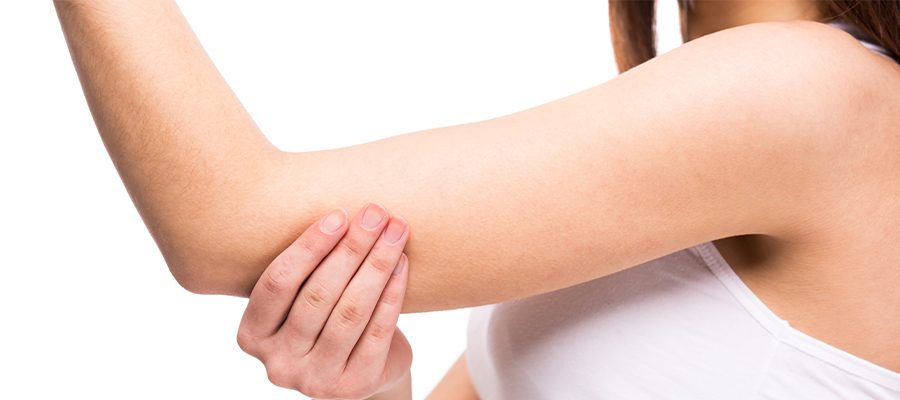Arm Lift

Arm Lift
An arm lift, which is also known as brachioplasty, is the reshaping of the upper arm by tightening the loose and saggy skin and removing the fat under the arm. Weight loss or removal of excess skin caused by natural aging tightens loose skin from the armpit area to the elbow. Liposuction can also be used in this procedure if it is deemed necessary according to the condition of the patient.
When Should Upper Arm Lift Be Considered?
If your armpit area is saggy despite having normal weight,
If you have lost a lot of weight and your upper arm skin started to look like bat wings,
If you agree to the fact that you will have this appearance eliminated; however, you will have a scar in return.
If you experience one or more of the problems mentioned above, if your overall health is good and you have realistic expectations, if you feel ready and have a positive attitude about this procedure, you can be an excellent candidate for this procedure.
 Pros
Pros
You will look much better in your clothes.
Your self-confidence will improve, and you will feel that your image has been renewed.
You will be able to wear short-sleeved or sleeveless clothes without feeling bad.
Cons
There will be visible scars on the inside of the arm, from the armpit to the elbow.
Wound healing can vary from person to person; therefore, the exact appearance cannot be predicted.
How is arm lift performed?
Your surgeon will mark the elbows, arms and armpits for the location, length and direction of the incisions depending on the type of brachioplasty decided before the surgery. These incisions are necessary to remove excess skin and fat. The incisions can be completely hidden in the armpits, or they are tried to be made in the most invisible way possible. After the incisions are made, the excess skin and fat are removed in order to provide a tighter and smoother arm contour; and the incisions are carefully closed.
How Long Does the Outcome Last?
The results of this procedure last for many years as long as excess weight is not gained. Surely, the skin will loosen in time. However, it will be much less compared to the condition before the surgery.
Risks
Serious risks are rare, and the post-operative satisfaction rate is high in arm lift procedures.
Yet, all surgical procedures have a certain degree of risk. Some of the possible complications of all surgical procedures include:
- Reaction to anesthesia.
- Hematoma or seroma (accumulation of blood or fluid under the skin, which requires removal).
- Infection and bleeding.
- Changes in skin sensation.
- Scarring.
- Allergic reactions.
- Unsatisfactory results that may require additional procedures.
- Numbness and tightness in the surgical area, which usually improves within a few months.
Process
- Following all the instructions given by your surgeon is very important for the healthy progress of your healing process (such as post-operative bandage, drain, incision care, medication/cream use, etc.).
- The duration of stay in the hospital is 1 day unless there is a medical necessity.
- After being discharged, you will have post-operative follow-ups on the days to be determined by the surgeon.
- Avoid activities that may raise your blood pressure and cause bleeding at the surgical site for the first ten days.
- It may take a few days to return to your daily routine; however, if you are employed it is recommended to take a week off. If you have a physically active job that will especially strain your arms, it is recommended to take 2 weeks off.
You may have a feeling of tightness and pain in your seams for the first three days. This can be relieved with painkillers, and it will decrease over time.
- You may need to be accompanied by a relative for a few days as you may feel tired and sensitive due to your surgery.
- Do not drive during the first 10 days.
- Heavy exercise and heavy lifting, including infants/children, should be avoided for one month after the procedure.
- Smoking reduces circulation, delays wound healing and significantly increases the likelihood of serious complications; therefore, you should discontinue smoking at least four weeks before and four weeks after your procedure.
- It is recommended that you do not expose your incisions to excessive force or movement, and avoid exercises that directly force the area, especially during the first four weeks.